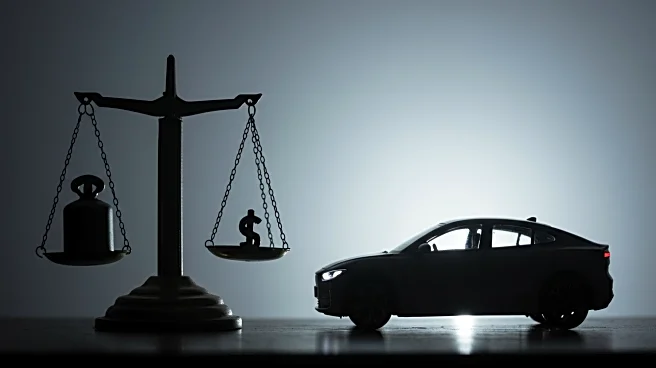Rapid Read • 8 min read
California has successfully linked 100,000 residential storage batteries to form a virtual power plant (VPP), marking a significant milestone in renewable energy integration. This initiative, involving Pacific Gas and Electric (PG&E), Southern California Edison (SCE), and San Diego Gas & Electric (SDG&E), utilized batteries from Tesla and Sunrun to supply 535 megawatts of electricity during a test on July 29, 2025. The test aimed to demonstrate the reliability and responsiveness of solar power when combined with battery storage, countering claims of its unreliability. The California Public Utilities Commission and the California Energy Commission have developed programs like the Emergency Load Reduction Program to incentivize energy reduction during peak demand. The VPP test was a rehearsal for potential grid emergencies, with independent analysis by Brattle Group confirming its effectiveness.
AD
The successful deployment of a VPP in California represents a significant step towards reducing reliance on fossil fuels and enhancing grid stability. By potentially reaching over a gigawatt of capacity within five years, the initiative could negate the need for new fossil fuel power plants, offering a cleaner and more cost-effective energy solution. This development is crucial as it aligns with national goals to expand VPP networks, with a Department of Energy study projecting up to 160 gigawatts of VPP capacity by 2030. The initiative also highlights the role of underserved communities in energy innovation, as many participants were from areas prone to power outages.
California aims to expand its VPP capacity, with utilities in 34 states already moving to initiate or expand similar networks. The main challenge remains simplifying the enrollment process for customers, as current procedures can be cumbersome. As the state progresses, the focus will be on integrating more residential batteries and enhancing the infrastructure to support larger-scale deployments. The success of this initiative could serve as a model for other states and countries looking to transition to renewable energy sources.
The VPP initiative underscores a shift in energy policy towards decentralized and community-based solutions. It challenges traditional energy narratives and highlights the potential of renewable energy to meet peak demand without compromising reliability. The involvement of companies like Tesla and Sunrun also points to the growing role of private sector innovation in public energy solutions.
AD
More Stories You Might Enjoy











